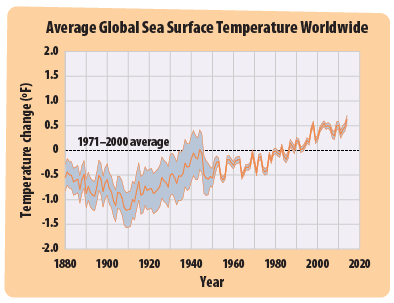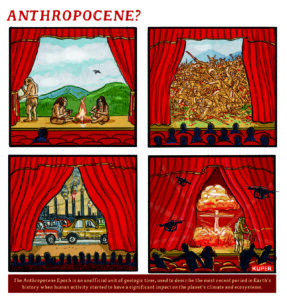Hurricane Matthew Is a Herald of Man-Made Climate Change
Today's hurricanes are made worse by the climate shift that has already occurred, and future hurricanes will be made even more devastating by denial of that fact.
By Juan Cole / Informed Comment
Hurricane Matthew is unusually strong. The warmer the water is, the more powerful the hurricane is—and the longer the storm lasts.
Hurricane Matthew is unusually strong, and was for a while there a level 5 tropical storm.
Level 5 hurricanes only form when the top layer of the ocean is 80 degrees or more. That is hot for the ocean, traditionally.
Hurricane Matthew set a record for being the longest-lived level 4 or higher hurricane ever.
The storm has dropped to level three for the moment but is expected to ramp back up to level 4 shortly as it approaches Florida (not good news). NOAA’s National Hurricane Center says:
“Maximum sustained winds are near 115 mph (185 km/h) with higher gusts. Matthew is a category 3 hurricane on the Saffir-Simpson Hurricane Wind Scale. Strengthening is expected during the next 24-36 hours, and Matthew is forecast to be a category 4 hurricane as it approaches Florida.
Hurricane-force winds extend outward up to 45 miles (75 km) from the center and tropical-storm-force winds extend outward up to 175 miles (280 km).
Tropical cyclones are normal in the Caribbean and are hardly a new phenomenon. But they are propelled by warm water. The warmer the water is, the more powerful the hurricane, and the longer it lasts.
Likewise, warmer ocean water means that the hurricane season is going to be longer and longer. It is late in the season for Matthew to be so large and fast, traditionally, but we have to get used to having more and fiercer hurricanes and to having the season for them increase a great deal.
The average surface temperature of the world, including the oceans, is a little over 1 degree centigrade warmer than it was in 1880, or 1.6 degrees Fahrenheit. That the oceans are warmer is why hurricanes are getting stronger.
In turn, this warming is produced by the spewing of billions of tons of carbon dioxide and methane into the air by human beings when they drive their vehicles, heat or cool their homes, use electricity, etc. — though if you put solar panels on your roof and got an electric car, fueling it from the sun, you’d be ahead of the game.

The EPA says: “The surface of the world’s oceans has become warmer overall since 1880. In this graph, the shaded band shows the likely temperature range, which depends on the number of measurements and the methods used at different times. Source: EPA’s Climate Change Indicators (2016).”
Sea level rise, caused by warmer water and by arctic and antarctic ice melt, also worsens the hurricane’s storm surge potential.
The scientific question isn’t whether Matthew was caused by climate change. The proper answer is, all hurricanes in the contemporary world are made worse by the climate change that has already occurred, and will be made yet worse again by more climate science denial. For every 1 degree centigrade temperature increase of the earth’s surface, the intensity and longevity of the hurricane is increased 16 percent. As the waters warm, we can expect more violent storms that last longer. Not good.
Your support matters…Independent journalism is under threat and overshadowed by heavily funded mainstream media.
You can help level the playing field. Become a member.
Your tax-deductible contribution keeps us digging beneath the headlines to give you thought-provoking, investigative reporting and analysis that unearths what's really happening- without compromise.
Give today to support our courageous, independent journalists.






You need to be a supporter to comment.
There are currently no responses to this article.
Be the first to respond.